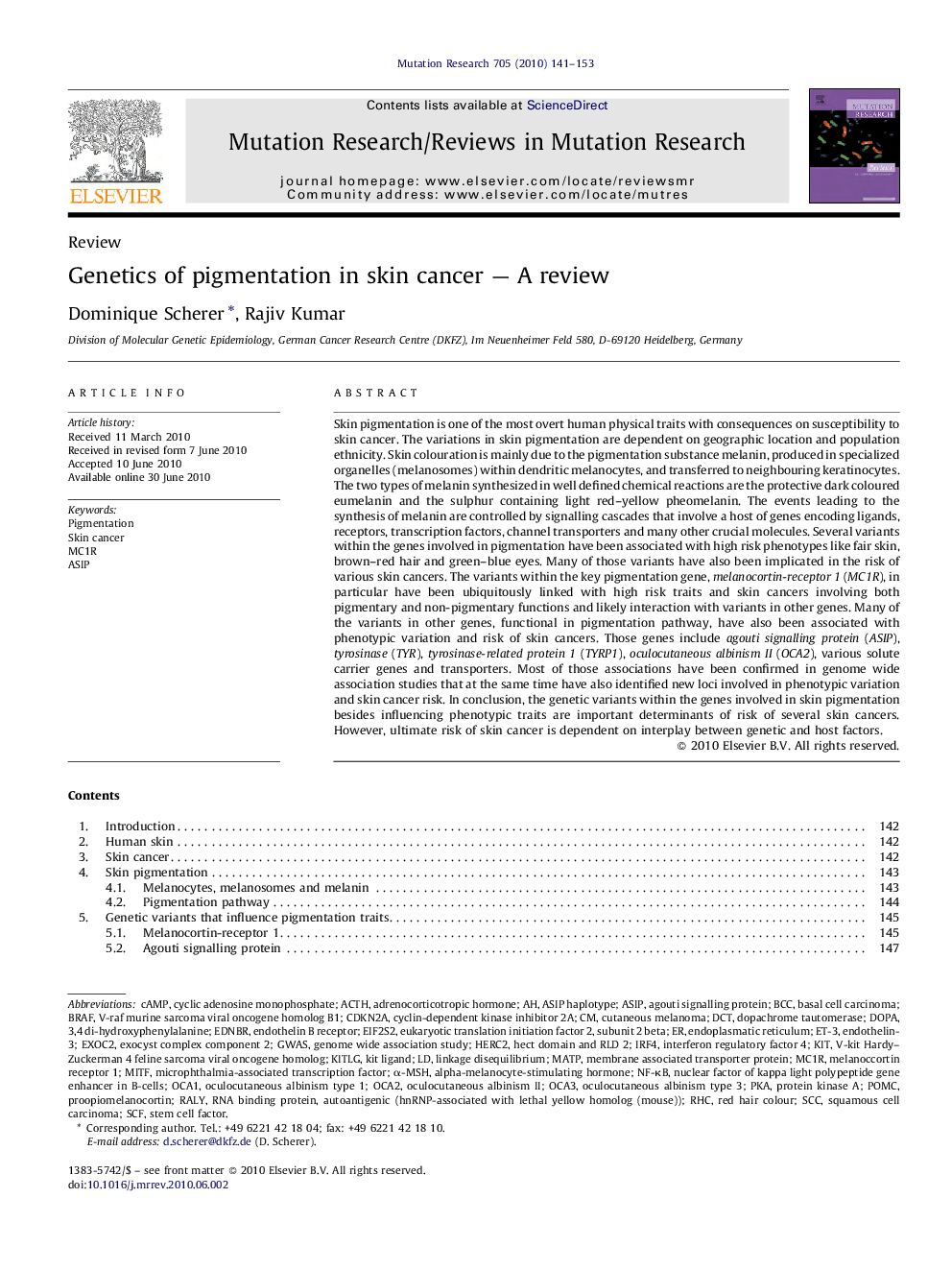| کد مقاله | کد نشریه | سال انتشار | مقاله انگلیسی | نسخه تمام متن |
|---|---|---|---|---|
| 2149643 | 1089869 | 2010 | 13 صفحه PDF | دانلود رایگان |

Skin pigmentation is one of the most overt human physical traits with consequences on susceptibility to skin cancer. The variations in skin pigmentation are dependent on geographic location and population ethnicity. Skin colouration is mainly due to the pigmentation substance melanin, produced in specialized organelles (melanosomes) within dendritic melanocytes, and transferred to neighbouring keratinocytes. The two types of melanin synthesized in well defined chemical reactions are the protective dark coloured eumelanin and the sulphur containing light red–yellow pheomelanin. The events leading to the synthesis of melanin are controlled by signalling cascades that involve a host of genes encoding ligands, receptors, transcription factors, channel transporters and many other crucial molecules. Several variants within the genes involved in pigmentation have been associated with high risk phenotypes like fair skin, brown–red hair and green–blue eyes. Many of those variants have also been implicated in the risk of various skin cancers. The variants within the key pigmentation gene, melanocortin-receptor 1 (MC1R), in particular have been ubiquitously linked with high risk traits and skin cancers involving both pigmentary and non-pigmentary functions and likely interaction with variants in other genes. Many of the variants in other genes, functional in pigmentation pathway, have also been associated with phenotypic variation and risk of skin cancers. Those genes include agouti signalling protein (ASIP), tyrosinase (TYR), tyrosinase-related protein 1 (TYRP1), oculocutaneous albinism II (OCA2), various solute carrier genes and transporters. Most of those associations have been confirmed in genome wide association studies that at the same time have also identified new loci involved in phenotypic variation and skin cancer risk. In conclusion, the genetic variants within the genes involved in skin pigmentation besides influencing phenotypic traits are important determinants of risk of several skin cancers. However, ultimate risk of skin cancer is dependent on interplay between genetic and host factors.
Journal: Mutation Research/Reviews in Mutation Research - Volume 705, Issue 2, October 2010, Pages 141–153